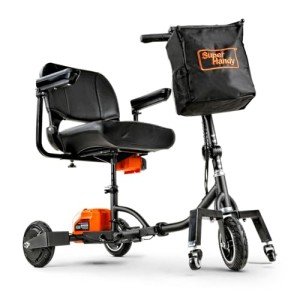Understanding Mobility Aids: Enhancing Independence and Quality of Life
As society continues to age and individuals significantly seek ways to preserve self-reliance, the demand for mobility aids has never been more essential. Mobility aids, which encompass a range of devices created to help individuals with strolling or moving around, play a vital role in promoting mobility, boosting safety, and enhancing general lifestyle. please click the next internet page will explore the various types of mobility aids, their benefits, considerations for choice, and respond to some often asked concerns.
Types of Mobility Aids
Various mobility aids are offered, each developed to address particular needs. The following table summarizes some of the most common kinds of mobility aids and their functions.
| Kind Of Mobility Aid | Description | Best Suited For | Key Features |
|---|---|---|---|
| Walking sticks | A portable stick offering support and balance. | Individuals who require very little support. | Light-weight, portable, adjustable height. |
| Walkers | Four-legged frames offering stability. | Those requiring substantial support while walking. | Foldable, some with wheels, added security functions. |
| Rollators | Wheeled walkers with a seat for resting. | People needing mobility with the choice to rest. | Brakes, baskets for personal products, adjustable height. |
| Wheelchairs | Chairs with wheels for people with minimal mobility. | Those unable to stroll or needing substantial support. | Handbook or powered alternatives, personalized seating. |
| Scooters | Motorized devices for larger ranges. | People with limited stamina but requiring self-reliance. | Various sizes and styles, frequently portable. |
| Crutches | Assistance devices placed under the arms or forearms. | People recuperating from lower limb injuries. | Adjustable, lightweight, requires upper body strength. |
| Stairlifts | Mechanical devices for moving between floorings. | Users dealing with obstacles in multi-level homes. | Adjustable for various staircases, automated. |
Benefits of Mobility Aids
Mobility aids provide an array of advantages that can substantially improve the lives of people dealing with mobility difficulties. Some notable benefits include:
- Increased Independence: Mobility aids empower people to move freely without relying on others for support, thus enhancing their self-confidence and self-esteem.
- Enhanced Safety: Using mobility aids can decrease the danger of falls and injuries, particularly for older adults or those with balance concerns.
- Improved Quality of Life: By helping with mobility, individuals can participate in social activities, participate in events, and delight in life more fully, adding to much better psychological and mental health.
- Rehabilitation Support: After surgical treatment or injury, mobility aids provide required assistance and stability, helping in healing and rehabilitation procedures.
- Ease of access: Many mobility aids are developed to be used both indoors and outdoors, guaranteeing that individuals can navigate different environments with ease.
Factors to Consider When Choosing Mobility Aids
Choosing the appropriate mobility help needs careful factor to consider of several factors, consisting of:
| Factor | Considerations |
|---|---|
| User's Needs | Evaluate the level of mobility needed; consider whether the user requires short-term or long-lasting assistance. |
| Physical Limitations | Evaluate the user's strength, balance, and coordination to identify the very best type of help. |
| Setting | Consider the primary environments where the aid will be utilized, such as home, outdoors, or particular terrains. |
| Weight and Portability | Ensure that the picked device is manageable concerning transportability and storage, especially for outdoor usage. |
| Spending plan | Mobility aids can be found in a series of rates; consider insurance coverage and offered funding options. |
| Adjustability | Select aids that can be changed for height and comfort to accommodate growth or altering needs. |
Frequently Asked Questions About Mobility Aids
1. How do I know if I require a mobility aid?
Numerous aspects can signal the need for a mobility help, such as problem walking or stabilizing, fatigue while standing, or a recent surgery affecting mobility. Consulting with a healthcare professional can offer assistance tailored to individual needs.
2. What kinds of mobility aids are covered by insurance coverage?
Protection differs between insurance companies, but most supply options for durable medical equipment, which normally consists of wheelchairs, walkers, and some types of canes. Contact your insurance company for particular coverage details.
3. Can mobility aids be used outdoors?
Yes, lots of modern-day mobility aids are designed for outside use. Rollators, scooters, and some walkers are geared up with functions for stability and ease of usage on various surface.
4. How do I maintain my mobility help?
Routine upkeep includes inspecting for any wear and tear, making sure that parts such as wheels, brakes, and frames are working correctly, and cleaning the equipment as needed. Following the producer's standards is important for security.
5. Exists a risk of becoming dependent on mobility aids?
While some users might become reliant on mobility aids, they are developed to promote independence and mobility. Slowly using a mobility help can improve confidence and aid keep physical strength and coordination.
Mobility aids are important tools that empower people to conquer physical obstacles, promoting independence and enhancing lifestyle. By comprehending the various kinds of mobility aids available, their benefits, and important aspects for consideration, families and caretakers can make informed decisions that best meet the requirements of their loved ones. With the right support, those with mobility challenges can lead fulfilling and active lives, totally free to check out the world around them.

